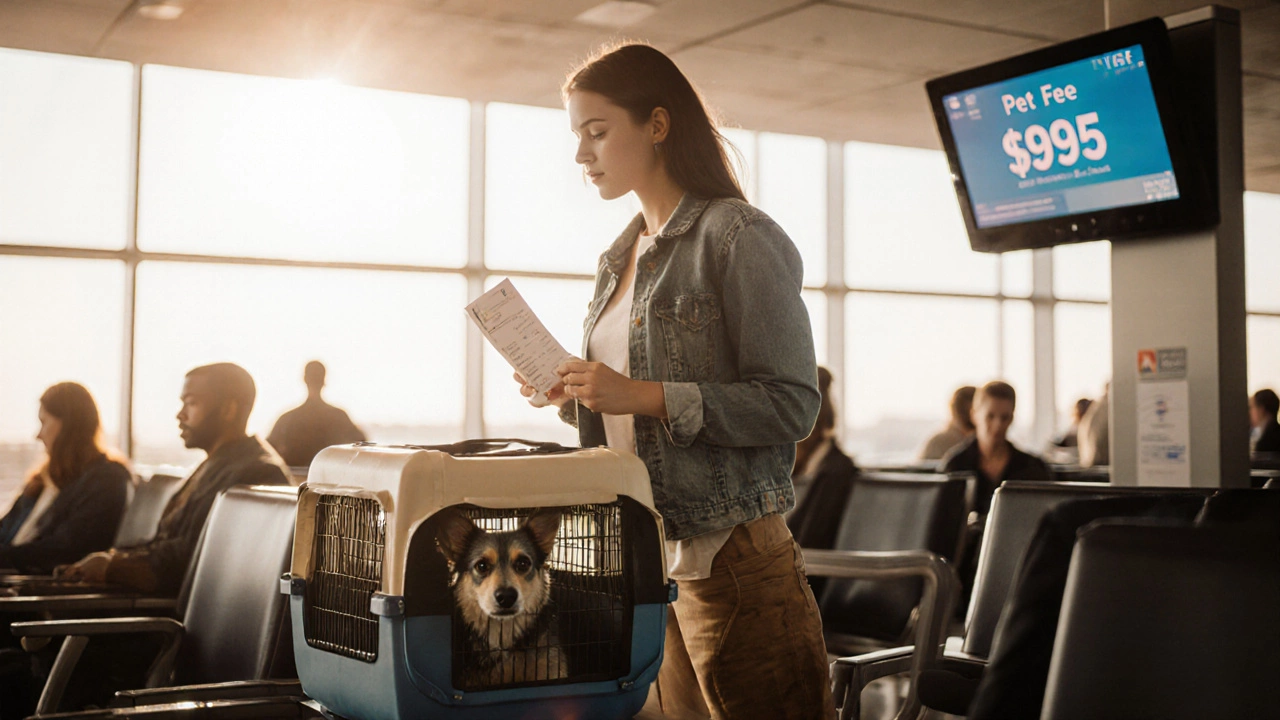Airline Pet Fees: What You Need to Know Before You Fly
If you’ve ever booked a trip and saw a line item for your pet, you probably felt a sting. Airline pet fees can turn a simple vacation into a budget shock. The good news is they’re not a mystery—most airlines break down the charge into clear parts, and you can plan for each of them. Below we’ll walk through the main fees, what makes them tick, and a handful of tricks to keep the cost down.
Typical Fees and How They’re Calculated
First, separate the two ways a pet can travel: cabin (under the seat) and cargo (the hold). Cabin fees usually range from $25 to $125 each way, depending on the carrier and the size of the pet carrier. Airlines set a maximum carrier dimension—often around 18×14×10 inches—so measure twice before you buy a crate.
Cargo fees are where the price can jump quickly. Most airlines charge a base rate plus a weight surcharge. A small dog weighing up to 15 lb might cost $150‑$200, while a larger 30 lb dog can push $300‑$500. Some carriers also add a breed surcharge for brachycephalic breeds (like bulldogs or pugs) because they’re considered higher‑risk in the hold.
Beyond the basic rate, watch for these extra items:
- Travel crate fee: Some airlines rent a certified crate for an extra $20‑$50.
- Health certificate fee: If you need a vet‑issued certificate, factor in the vet’s cost, usually $30‑$75.
- International surcharge: Crossing borders can add taxes or handling fees, often $50‑$100.
All of these add up, so it’s smart to create a pet‑travel budget before you click ‘book.’
How to Keep Fees Low and Avoid Surprises
Now that you know what you’re paying for, here are three practical ways to trim the bill.
1. Book early and compare airlines. Most carriers lock in pet fees when you reserve the seat. Waiting until the last minute can raise the cost or even sell out the pet‑friendly slots. Use a simple spreadsheet to compare cabin versus cargo fees across airlines for your route.
2. Use a compliant, lightweight crate. A crate that meets airline specs but weighs less can shave off a few dollars on the cargo surcharge. Look for crates made of sturdy plastic or aluminum that pass the airline’s drop test. If you already own a larger crate, consider renting a smaller one just for the flight.
3. Leverage loyalty programs or travel bundles. Some airlines waive or reduce pet fees for elite members or when you purchase a bundled ticket (flight + hotel). It’s worth calling the reservations desk to ask if a discount is available.
Finally, always double‑check the airline’s pet policy a day before you travel. Policies change, and a small update—like a new size limit—can save you a re‑booking fee.
Flying with a furry friend doesn’t have to break the bank. By understanding the fee structure, budgeting for the extras, and shopping smart, you’ll keep more money for treats, toys, and the fun part of the trip—making memories with your pet.

Pet Air Travel Costs: How Much to Fly with a Dog or Cat
Learn the exact costs of flying with a pet, from airline fees to hidden expenses, and get tips to keep your pet travel budget under control.
read more
Lowest Pet Fee Airline: Finding the Cheapest Way to Fly With Your Pet
Pet owners on the move always want to know which airline makes it cheapest to bring their furry friends. This article lays out airline pet fees, comparing major U.S. carriers to find who has the lowest charges. You’ll get practical tips for saving money and dodge common surprises. We’ll also talk about what these fees really include—and what catches to watch for. Get the facts before you buy that next ticket for you and your pet.
read more
How Much Does It Cost to Bring Your Pet on a Plane?
Planning to fly with your furry friend? Understanding airline pet fees can help you avoid surprises. Costs vary widely between airlines and depend on whether your pet is traveling in the cabin or as checked baggage. Some airlines even factor in the size and weight of your pet. Knowing these details can help you budget wisely for a smooth journey.
read more
